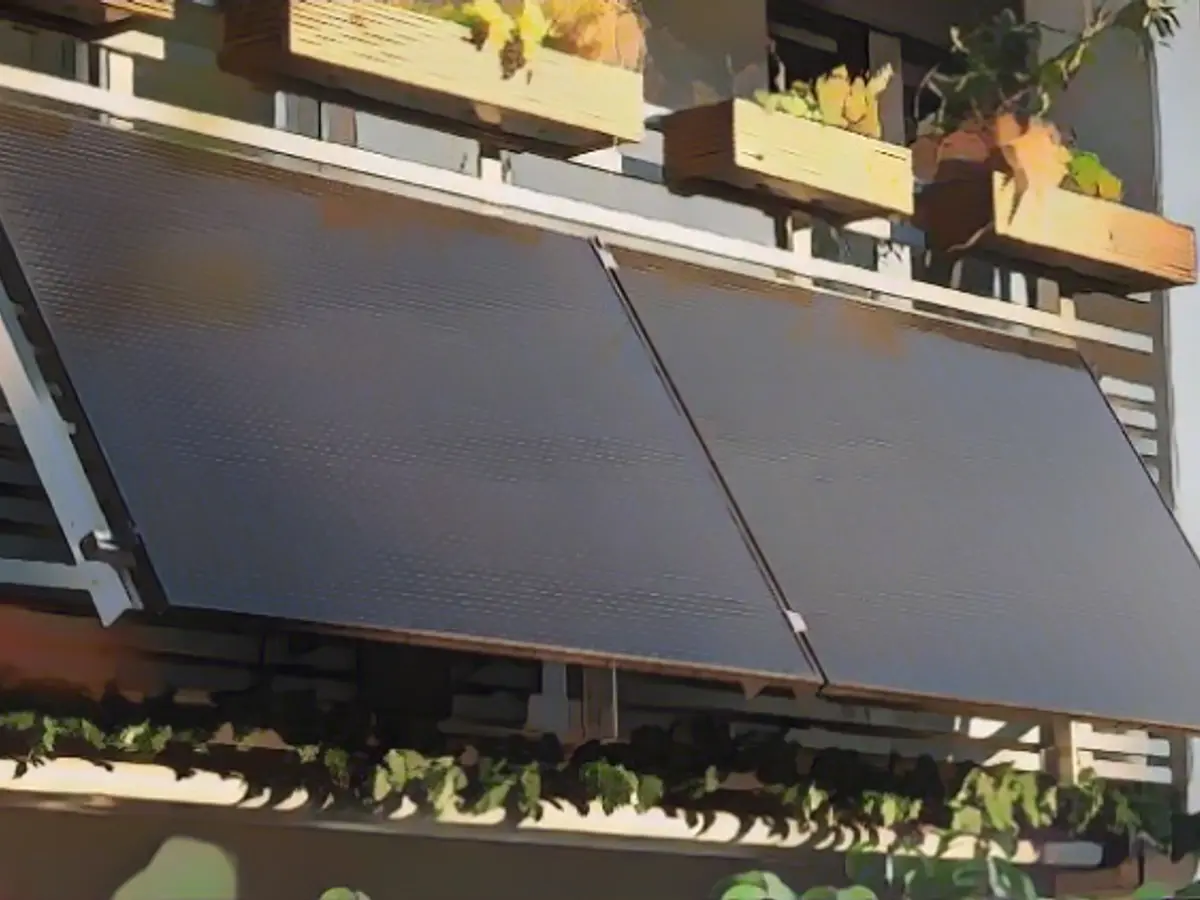Balcony power plants cause solar industry to boom
Germany has long been a pioneer when it comes to solar energy, but then loses out internationally. Yet demand is enormous. In 2023, more systems will be connected to the grid than ever before. Balcony power plants in particular are enjoying great popularity. The success story is set to continue in 2024.
According to the solar industry, more new solar systems for generating electricity and heat were installed in Germany last year than ever before. More than one million new systems were installed, reported the German Solar Industry Association (BSW) in Berlin.
A large proportion of these are so-called balcony power plants. Around 270,000 new plug-in solar devices were put into operation in Germany in 2023. According to the Federal Network Agency, systems with a peak output of around 14 gigawatts of electricity generation from sunlight were newly commissioned on roofs and open spaces, the association reported. This is 85 percent more than in the previous year 2022.
According to the BSW, half of the newly installed solar power capacity in 2023 was attributable to the residential segment. PV systems on open spaces accounted for around 31 percent and PV systems on commercial roofs for around 18 percent. "Due to their low specific output, the large number of plug-in solar devices accounted for less than two percent of the newly installed PV output," emphasized BSW Managing Director Carsten Körnig.
Twelve percent of energy comes from solar power
There are now around 3.7 million solar power systems installed in Germany. They would have generated around 62 billion kilowatt hours of electricity in 2023, covering around 12 percent of German electricity consumption.
The industry association expects demand to remain high in 2024. It justifies this with further increases in electricity prices and attractive subsidy conditions. "We expect the solar boom to continue in 2024," explained Körnig. However, to ensure that the growth targets are also achieved in subsequent years, the reduction in bureaucracy must not come to a standstill. Further measures to speed up the process are necessary in order to upgrade the electricity and heating grids more quickly.
Specifically, the association expects demand in the residential segment with rooftop systems with a PV output of up to 30 kilowatts to be similar to 2023 in 2024. Last year, PV rooftop systems with a total peak output of seven gigawatts were installed in this segment. In contrast, the BSW anticipates market growth for PV systems on commercial roofs and open spaces.
Read also:
- Why there is still no EU funding for green Saar steel
- 3 billion Saar Fund is unconstitutional
- Lack of snow also opens up new opportunities for winter tourism
- Abrupt end to e-car subsidies
The solar promotion initiatives in Germany have significantly contributed to the boom in the solar industry, leading to a record number of solar systems connected to the grid in 2023. This growth can largely be attributed to the popularity of balcony power plants, with more than a quarter of a million new systems installed that year.
As the demand for solar energy continues to rise, the solar industry anticipates another record year in 2024. Solar energy is expected to contribute around 12% of Germany's overall electricity consumption in 2023, showcasing the significant role of solar energy in the country's energy mix. The success of solar promotion and the popularity of solar energy technologies like photovoltaics are driving the growth of the solar industry, contributing to Germany's renewable energy goals.
Source: www.ntv.de








